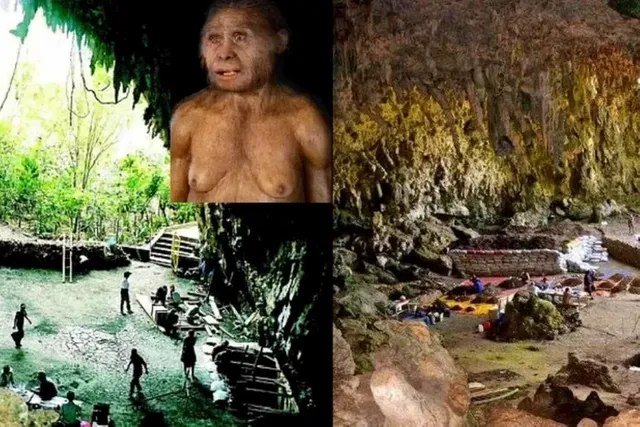"Hobbit Indonesia" some of the main characteristics and facts about Homo Floresiensis

Liang Bua Cave is the specific location on the island of Flores, in the Indonesian province of Nusa Tenggara Timur (NTT), where the remains of Homo floresiensis, commonly known as the "Hobbit," were discovered. The cave gained international recognition as a significant archaeological site when these ancient hominin fossils were found there in 2003.
The discovery of Homo floresiensis in Liang Bua Cave has shed light on human evolution and migration patterns, as it indicates that a unique population of small-statured humans inhabited the region tens of thousands of years ago. The cave continues to be an important site for researchers studying the history of human evolution and the ancient history of the Indonesian archipelago.

Homo floresiensis, often referred to as the "Hobbit," is an extinct species of hominin that lived on the Indonesian island of Flores. It is known for its small stature and a unique set of anatomical features. Here are some key characteristics and facts about Homo floresiensis:
Small Size: Homo floresiensis individuals were quite small, with an average height of around 3.5 feet (about 1 meter). This diminutive size earned them the nickname "Hobbit."
Brain Size: Despite their small stature, their brains were relatively small, with an estimated average brain volume of about 380 cubic centimeters, which is significantly smaller than modern humans.
Stone Tools: Archaeological evidence found in association with Homo floresiensis suggests that they used stone tools. These tools are similar in some ways to those associated with early Homo species.
Age and Existence: Homo floresiensis is believed to have lived on Flores between approximately 100,000 and 50,000 years ago. This relatively recent existence has generated significant interest in the study of human evolution.
Controversy: The discovery of Homo floresiensis has been a subject of debate and controversy within the scientific community. Some researchers argue that these individuals represent a distinct species, while others suggest that they could be the result of pathological conditions within a population of modern humans.
Isolation on an Island: It's believed that isolation on the island of Flores may have played a role in the evolution of Homo floresiensis, leading to their small size and unique features. The limited resources and ecological factors on the island could have contributed to these adaptations.
The study of Homo floresiensis continues to be an important topic in the fields of paleoanthropology and archaeology, and it offers valuable insights into the complexity of human evolution and adaptation in different environments.